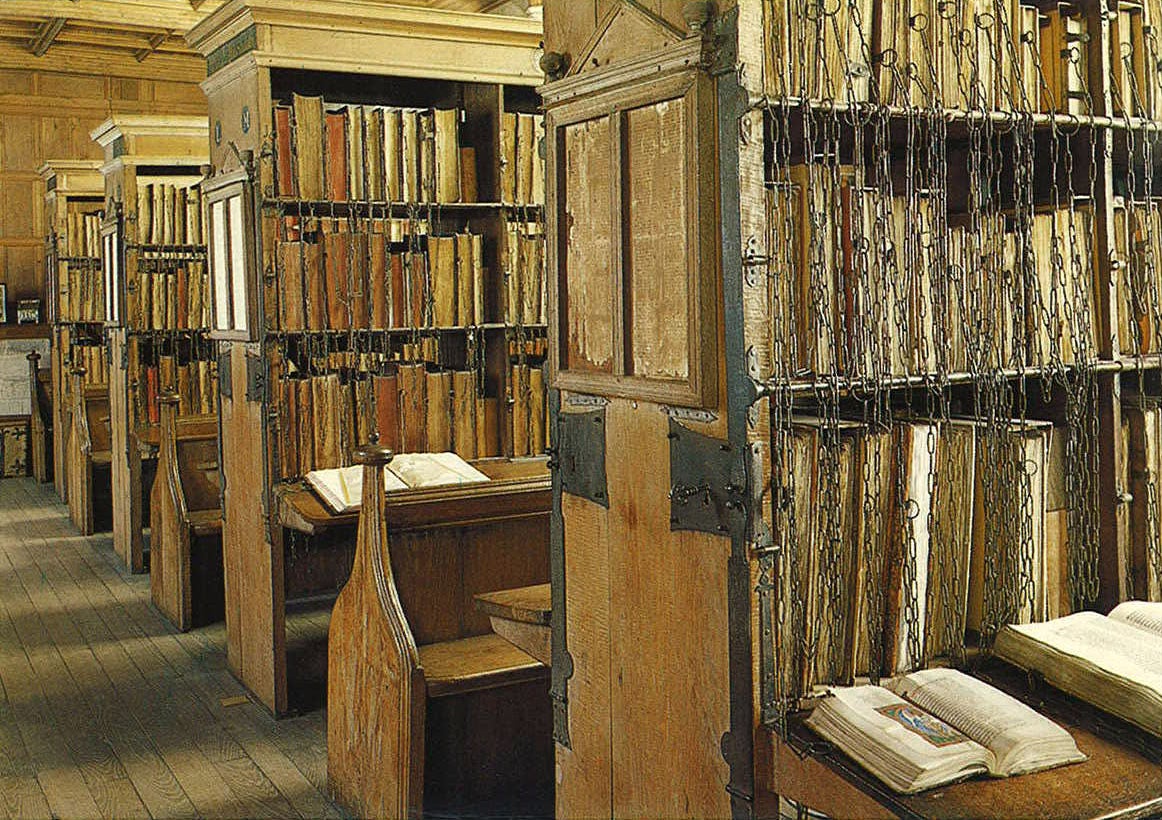Hidden Wisdom and Unseen Treasure: Revisiting Cataloging in Medieval Libraries
Beth Russell in her article “Hidden
Wisdom and Unseen Treasure: Revisiting Cataloging in Medieval Libraries”,
addresses the challenges of medieval catalogers and summarizes recent research
and discovery in the field of medieval libraries. There are no two medieval
libraries alike. Since there was no consensus between library professionals
regarding the categorization and organization of texts, each library had its
own practice for cataloging materials. However, the struggles of medieval
catalogers are not too foreign from those of modern catalogers. Both seek to
provide easy access to materials for patrons, and that is in itself the core of
library cataloging.
When trying to accommodate users,
medieval librarians did not have national and international standards upon
which to begin building their system, they only had the needs of their patrons
to consider. Most early examples of library cataloging take place in monasteries,
where the most basic type of classification for books is use. For example, liturgical
or service books were stored near the chapel since their function was for use
in the chapel. In some situations, specifically Durham Cathedral’s catalog
1391-1395, an iron grille divided stored books, the inner portion being
restricted use and the outer portion accessible to any patron, or monk in the
case of Durham.
However, once collections started
to diversify, there were two collections stored in different rooms with
different keys (e.g. Sorbonne’s
magna libraria and libraria parva), which was likely due
to both secular and religious texts acquired at universities. In the
beginnings, chained volumes (pictured above) were not included in early
catalogs, as they did not need to be kept track of. In terms of what kinds of
information were found on cataloged items, catalogers would often assign
letters of the alphabet to the volumes or gave detailed descriptions of the
shelf where they could be found. In addition, catalogers would physically
describe the books, the number of volumes, their size, and the completeness of
the set (if applicable). For multiple copies, catalogers would distinguish each
copy by description. Trinity Hall,
Cambridge, for example, listed a duplicate as “magna et pulchra” (big and pretty), which would help distinguish it
from another copy of the same text that was small and ragged.
Later in medieval times, catalogers
would record the opening words of the first leaf in the volume as an
organizational tool. This shows that even in medieval times, catalogers
realized that distinguishing among copies was necessary for duplicates. As
organization evolved, there was an acceptance of alphabetical order for
subjects, which began as early as the twelfth century. However, Russell points
out that there is the issue of cataloger bias, and uses Glastonbury Abbey as an example. At
Glastonbury, books with “interesting” subjects or whose author was not
illustrious were cataloged by subject, whereas works by famous authors were
filed under that author’s name (with no mention of subject). In this case, the
cataloger’s opinion and knowledge defines whether the topic is interesting
enough to have a subject heading, or if the author is well known enough to be
filed by name.
As should modern libraries, when
the use of books changed and when the number of books in the collections
increased, so did the catalog and the way in which things were cataloged.
Russell comments that "modern catalogers struggling to meet local needs in a
cooperative electronic environment can look for inspiration and for examples of
ingenuity and invention, to our early colleagues in centuries past, who dealt
with similar problems in organizing the knowledge in their care." I believe it
is extremely important to learn from the past to aid in future decisions –
those who do not learn from history are doomed to repeat it. We, as librarians, catalogers, and organizers of information need to be inspired by the ingenuity of past ages, and understand that change isn't a bad thing, in fact, it might be the best thing for your collection.
Overall, Russell's article was very entertaining and insightful. The organization of the information within this article felt chronological, though I felt like there could be some sort of better organization to the examples of cataloging in medieval times. There are so many examples thrown out, it definitely puts into perspective the non-conformative nature of the medieval catalog, which may be what Russell was going for. I would recommend this article to medieval historians, library and information science professionals, and library enthusiasts alike. I agree with her assertation that we modern information specialists should take note of historical practices and inventiveness and never feel unable to adapt to new usage and new organization of our collections.
______________________________________________________________________
If you want more examples, be sure to check out the whole article (citation below)!
Russell, B.M. (1998). Hidden wisdom and unseen treasure: Revisiting cataloging in medieval libraries. Cataloging & Classification Quarterly 26(3):21-30.
______________________________________________________________________
If you want more examples, be sure to check out the whole article (citation below)!
Russell, B.M. (1998). Hidden wisdom and unseen treasure: Revisiting cataloging in medieval libraries. Cataloging & Classification Quarterly 26(3):21-30.

Good work! Lots of lessons for today that can be drawn from the study of the history of cataloging!
ReplyDeleteDr. MacCall